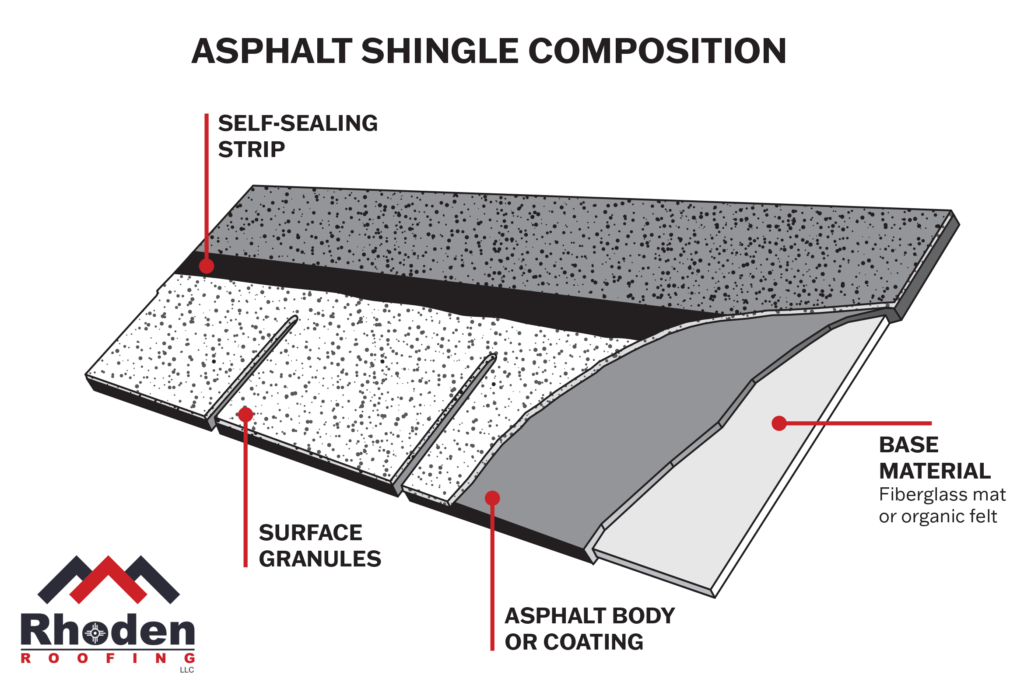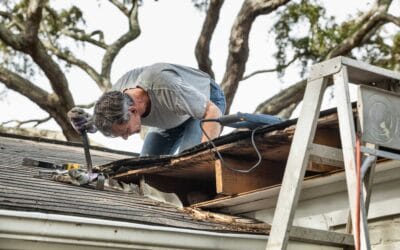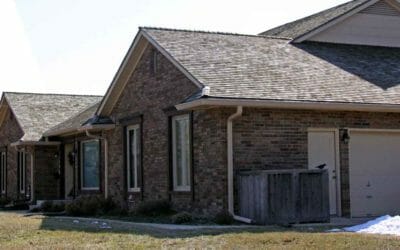What Are Composite Shingles?
Composite shingles are layered, water-shedding surfaces made from at least two different complimentary materials. For example, a shingle made entirely of fiberglass strands would be durable, but not waterproof. A shingle made from asphalt only would be waterproof, but prone to impact damage.
Fiberglass asphalt shingles are the most popular composite shingle material because the two materials complement each other in a way that is simple, cost effective, and durable. Other composite shingles (like fiber cement) do the same thing, but in a completely different way.
The term composite shingles can include other forms of roofing like synthetic tiles, synthetic slate, and shingles. These composite materials are formed into shapes designed to mimic natural materials, like cedar shingles and natural slate.
Natural materials, like cedar shingles and natural slate, are not considered composite shingles because they are not built from man-made materials.
Fiberglass asphalt shingles dominate the composite roofing industry, with the vast majority of manufacturers offering strip (also known as three-tab), dimensional, and luxury (also known as architectural) shingles.
Here is a diagram of a typical composite shingle:

Asphalt shingle layers diagram illustration
Note that the composition of the shingle includes only three materials, with each providing a specific benefit. Composite shingles are designed to look good, prevent water damage, and remain durable for many years.
How Do I Know If I Have a Composite Roof?
Unless your roof is protected by a natural roofing material, like cedar shingles or slate, you probably have a composite roof system. All shingles are installed in courses (rows) to ensure each shingle overlaps the course below it. All shingles require a pitch, or slope, as opposed to “low-slope” (commonly called “flat roofs”), which use different materials.
A roof with a pitch lower than 3:12 is not a candidate for shingles. Assuming there are no waterproof underlayment installed designed for low slope roofing, the roof must rise at least 3” for every 12” of travel. Most composite shingle roofs have a pitch of 4:12 to 12:12, with 6:12 being the most common.
What Are Fiberglass Asphalt Shingles Made From?
Fiberglass asphalt shingles are constructed made from interwoven strands of fiberglass, which are coated in asphalt and covered with granules. This design makes a fiberglass asphalt shingle cost effective to manufacture, flexible, and durable.
Fiberglass Strands
Many composite shingles, even those that simulate another material, are formed from small strands of fiberglass. Fiberglass gives each shingle the ability to resist tearing or cracking, as well as resistance to impacts.
Asphalt
The fiberglass strands are woven into a mat and embedded in asphalt, or a mixture including other materials. The asphalt gives each shingle the ability to flex and conform to the shingles below it and is largely responsible for preventing leaks.
Granules
The granules found on most composition shingles are usually made from some form of crushed stone, such as volcanic rock, basalt, and granite. These materials add durability and impact resistance to the outward facing side of the shingle, which faces the weather.
What Are Organic Composite Shingles?
Organic shingles have not been produced since 2006, but they offered superior protection from cold temperature damage. Organic shingles were more effective in cold temperatures because they had two asphalt layers and a thicker mat.
However, organic shingles tended to leach volatiles, which are compounds that add strength, flexibility, and durability to the shingle. Because organic shingles were essentially made from very absorbent materials, once these important volatiles escaped, the shingles had little protection from the elements.
Warm climates however tended to speed up the leaching process, lending to more frequent failures. In this case, the thickness of an organic shingle worked against it. The additional material allowed the shingle to soak up even more moisture, leading to water damage.
Organic shingles did not use fiberglass strands to create the mat for the shingle, but rather recycled cardboard, wood, and paper. Asphalt was then used to add water resistance to the mat, along with granules.
For professional roofing solutions in Wichita, Rhoden Roofing offers free estimates.
This article is part of our ‘Residential/ Steep Slope Materials’ Series. Learn more about:
- Asphalt Composite Shingles
- Metal Roofing
- Wood/ Cedar Roofing
- Other
- Roof Component Materials
- Traditional “Organic” Felt vs Synthetic Underlayment: Which is better?
- What Is the Difference Between Open and Closed Valley Installation?
- Continuous Venting Ridge vs Static/Box Vents: Which is better?
- What Are the Benefits to a High Profile Hip and Ridge Shingle?
- What Is a Class 4 Rating? Who Makes That Determination?



